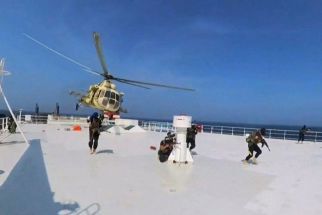Higher tides expected during midweek supermoon
MANILA, Philippines — No catastrophic events, but the so-called “supermoon” tomorrow will bring slightly higher-than-average tides, according to the Philippine Atmospheric, Geophysical and Astronomical Services Administration (PAGASA).
Dario dela Cruz, chief of PAGASA’s Space Science and Astronomy Section, said the lunar event would only have minimal effect on tidal elevation or sea level.
Coined by astrologer Richard Nolle, a supermoon refers to a phenomenon that occurs when a full moon coincides with the moon being at its closest distance to Earth.
The moon’s gravitational pull is strongest when it is closest to the Earth.
“Mostly the effect is on tides. During supermoon we can expect additional two inches during high tide,” Dela Cruz said in a press conference.
Apart from a supermoon, astronomy enthusiasts could also witness a blue moon, which is the second of two full moons in the same month, and a total lunar eclipse when the moon goes into the darkest part of the Earth’s shadow tomorrow.
Blue moons happen once every two to three years. The phrase “once in a blue moon” was derived from this phenomenon to signify rarity.
During a total lunar eclipse, the moon turns red due to the sunlight reflected by the Earth’s atmosphere.
The red color of a totally eclipsed moon has prompted many people in recent years to refer to total lunar eclipses as blood moons.
PAGASA weather specialist Mario Raymundo noted that people near Mayon Volcano in Albay could see the moon “redder” during the total lunar eclipse due to dust particles from the erupting volcano.
“The dust particles will add color to the moon,” he said.
The last time the three lunar events happened at the same time was 36 years ago, Dela Cruz said.
“This is a rare event,” he said. “Sometimes this happens every 100 years.”
PAGASA officials, however, maintained the super blue blood moon would not trigger disasters, such as earthquakes and volcanic eruptions.
“It’s not true that this will trigger volcanic eruptions,” said Cynthia Celebre, chief of PAGASA’s Research and Development and Training Division.
Dela Cruz said the lunar events will be seen in most parts of the country, except in northeastern Luzon.
A tail-end of a cold front will bring cloudy skies with moderate to heavy rains over northeastern Luzon – including Cagayan Valley region, according to PAGASA assistant weather services chief Robert Sawi.
Those who would like to view the super blue blood moon may go to the PAGASA Astronomical Observatory located at the University of the Philippines in Diliman, Quezon City, Dela Cruz said.
“Lunar eclipses are safe to watch and observers need not use any kind of protective filters for the eyes,” he said.
Related video:
- Latest
- Trending































